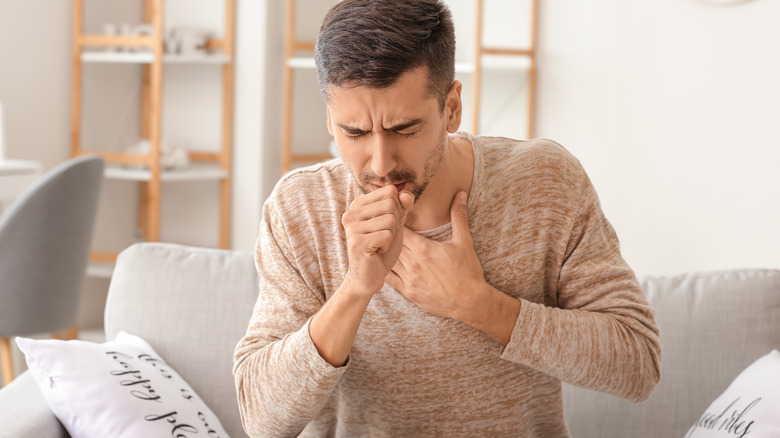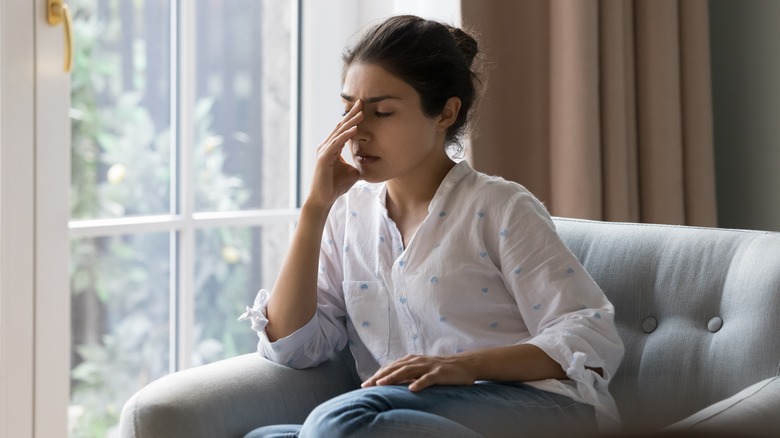How Quickly Can Mold Exposure Make You Sick?
Mold is a type of fungus that is found indoors and outdoors, and tends to grow in warm, damp, and humid conditions, per Medical News Today. According to Real-Time Laboratories, harmful levels of mold have been discovered in at least 45 million buildings in the United States. Mold produces tiny spores which can be inhaled into the lungs and cause health problems, including allergies, respiratory problems, and infections, via Medical News Today. Babies, pregnant people, those who have asthma, and people who have weakened immune systems, such as those with HIV or cancer, are at an increased risk of developing infections from mold exposure, per Healthline.
According to Medical News Today, there are more than 300,000 different types of mold, but some of the most common indoor varieties include Aspergillus, Alternaria, Cladosporium, and Penicillium. Aspergillus is a type of mold that is commonly found on dusty surfaces, like drywall. Alternaria is often found in areas with a lot of moisture, such as around the shower, while Cladosporium is commonly found on fabric surfaces. Lastly, Penicillium is mostly found on surfaces where there is damage caused by water.
How quickly can mold exposure make you sick?
According to Healthline, the time it takes for mold exposure to make you sick can vary greatly depending on several factors, including your overall health, and environment. Some individuals may develop symptoms within a few hours of exposure, while others may not experience any symptoms. According to the Centers for Disease Control and Prevention (CDC), those who mold sensitivities may notice nasal congestion, wheezing, and itchy eyes or skin.
People with pre-existing respiratory conditions, such as asthma, might be more at risk of experiencing respiratory symptoms when exposed to mold. According to a 2018 study published in the European Respiratory Review, mold inhalation was associated with the exacerbation or onset of asthma. In some cases, long-term mold exposure can also cause more severe health problems such as fatigue, organ damage, and a dangerous type of pneumonia called Legionnaires' disease, according to Healthline. Your doctor may recommend medications or other treatments to help relieve symptoms and prevent further exposure.
How is mold exposure treated?
Treatment for mold exposure can vary depending on the severity of symptoms and can involve self-care measures and medical treatment. Allergen avoidance, such as avoiding contact with mold-contaminated materials and improving ventilation by reducing humidity, can help reduce exposure and symptoms, according to Medical News Today. Over-the-counter or prescription antihistamines, decongestants, and nasal corticosteroids can also relieve symptoms.
In some cases, immunotherapy can help build immunity to the allergen, according to Allergy & Asthma Network. Those with asthma whose symptoms are triggered by mold can use an albuterol inhaler to open up their airways.
If you have mold in your home, ensure it's promptly removed to prevent further exposure and health problems. It is also important to be aware of the symptoms of mold exposure and take the necessary steps to reduce exposure if you are experiencing symptoms. This may include removing moldy materials from your home, improving ventilation, and using air purifiers.



